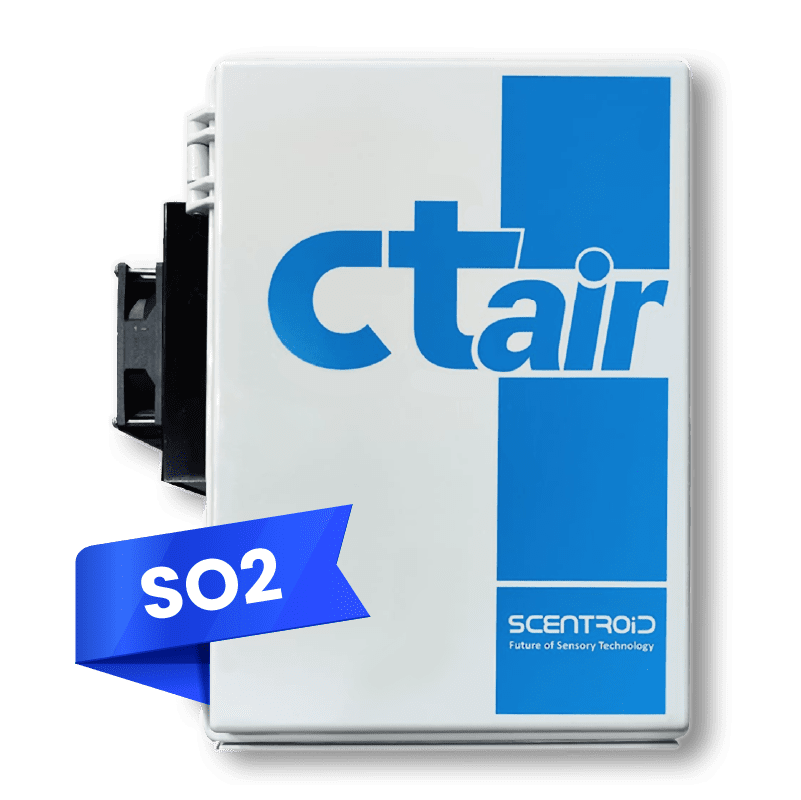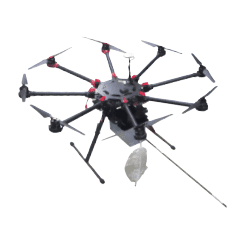Understanding
Sulfur Dioxide
SO2
Sulfur dioxide (SO₂) is a colorless, non-flammable gas with a pungent odor, often described as similar to the smell of burning sulfur. Specifically, it is primarily produced during the burning of sulfur-containing fuels, such as coal and oil. In addition, it is generated during industrial processes like metal smelting and petroleum refining. As a result, sulfur dioxide contributes to the formation of particulate matter (PM2.5) and fine aerosols, which can severely affect air quality. Given the health and environmental risks associated with sulfur dioxide, many countries regulate its emissions. For instance, in the U.S., the Environmental Protection Agency (EPA) sets limits on the amount of SO₂ that can be emitted by industries, and air quality standards are established to protect public health.

Advanced Sulfur Dioxide Detection
Scentroid CTair with Sulfur Dioxide detection is engineered for unparalleled accuracy in detecting Sulfur Dioxide (SO2) in ambient air precisely.
- Powerful Sulfur Dioxide(SO2) Detection
- Precise measurements and alarm systems
- Ensures the capture of fluctuations in Sulfur Dioxide(SO2)
Scentroid's SIMS for
Real-Time Reporting and Analysis
Seamless Data Integration and Visualization

Connect to SIMS3
Connect your Scentroid CTair to the Scentroid Sensor Information Management System (SIMS3) for comprehensive data management.

Visualize Data
SIMS3 provides live feed monitoring, enabling you to visualize Sulfur Dioxide levels in real-time.

Accessible Anytime
Access detailed reports, trends, and make informed decisions with our user-friendly interface.
Managing SO2 In
Industrial
Environments
Comprehensive SO2 Monitoring Solutions
End-to-End Air Quality Management with Innovative Technology
From initial detection to detailed analysis, Scentroid offers a complete solution for Sulfur Dioxide detection. In fact, our integrated system ensures you have all the tools necessary to manage air quality effectively. For example, benefit from continuous data flow, automated reporting, and advanced analytics, all designed to support your air quality management goals.
Overall, Scentroid combines cutting-edge technology with years of industry expertise to deliver unmatched air quality monitoring solutions.
Transform Your Air Quality Monitoring
Get Started with Scentroid Today
Ready to enhance your air quality monitoring capabilities? Contact us today to learn more about the Scentroid CTair and SIMS3, as well as discover how our comprehensive solutions can meet your specific needs. Join the growing number of organizations that trust Scentroid for their air quality and odour analysis requirements.


